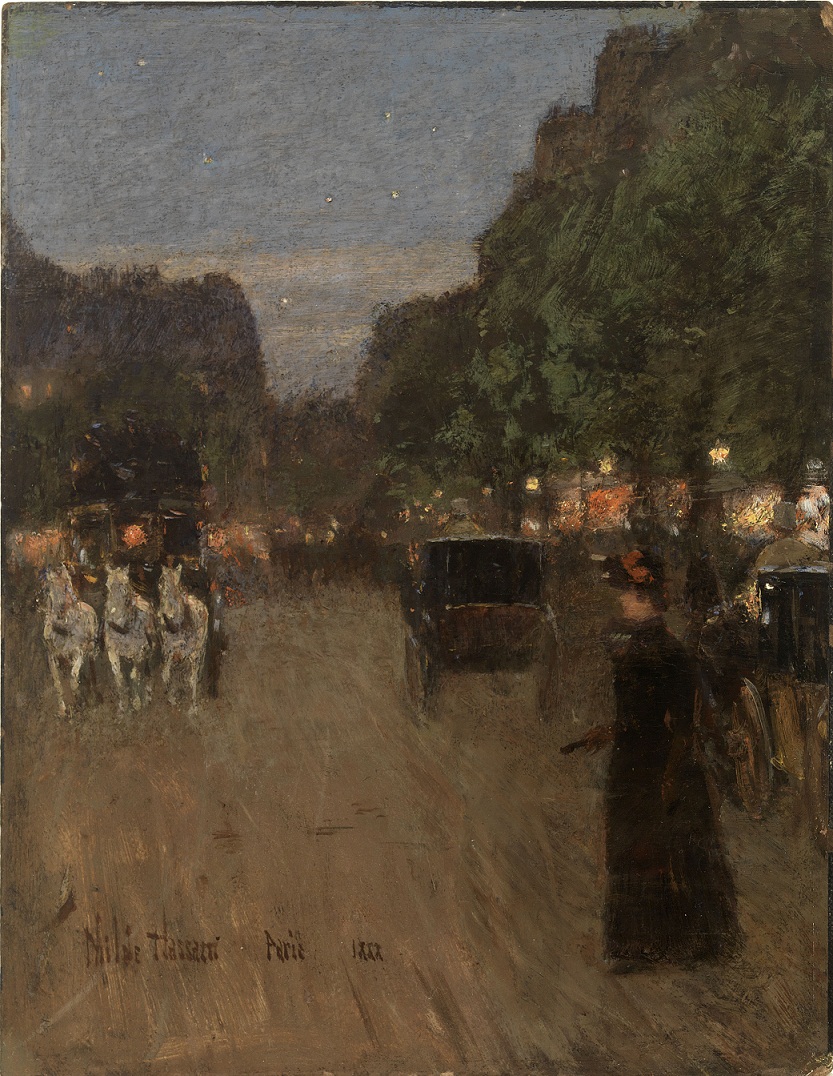february 17–APRIL 21, 2013
NOCTURNES AND PANORAMAS
Artificial lighting became more widespread and noticeable in Paris starting around 1850, the beginning of the heyday of gaslight in the French capital. Electric lights were deployed experimentally for the first time in the 1840s, but they did not proliferate until the end of the 1870s. Even as illumination increased, artists sometimes depicted the absence of artificial light in the form of the nocturne. The word is a musical term that refers to the imagery of nighttime.
Nocturnes as painted landscapes or cityscapes are often illuminated only by the moon and the stars. In contrast, many nineteenth-century panoramic views of "The City of Light" at night are expansive images inspired by the ever-wider array of industrial lights. Other views fall between the two extremes. While French artists often frankly portrayed the flashy, dazzling Parisian night, many American painters muted their representations of such scenes. Their works depict social life on illuminated thoroughfares and in new parks and squares, but avoid or subdue the glare of blazing artificial streetlight.
Childe Hassam (American, 1859–1935), Bois de Boulogne, 1888. Oil on panel, 12 1/16 x 9 3/8 in. (30.64 x 23.82 cm). Mead Art Museum, Amherst College, Amherst, Massachusetts. Museum purchase, AC 1953.10


